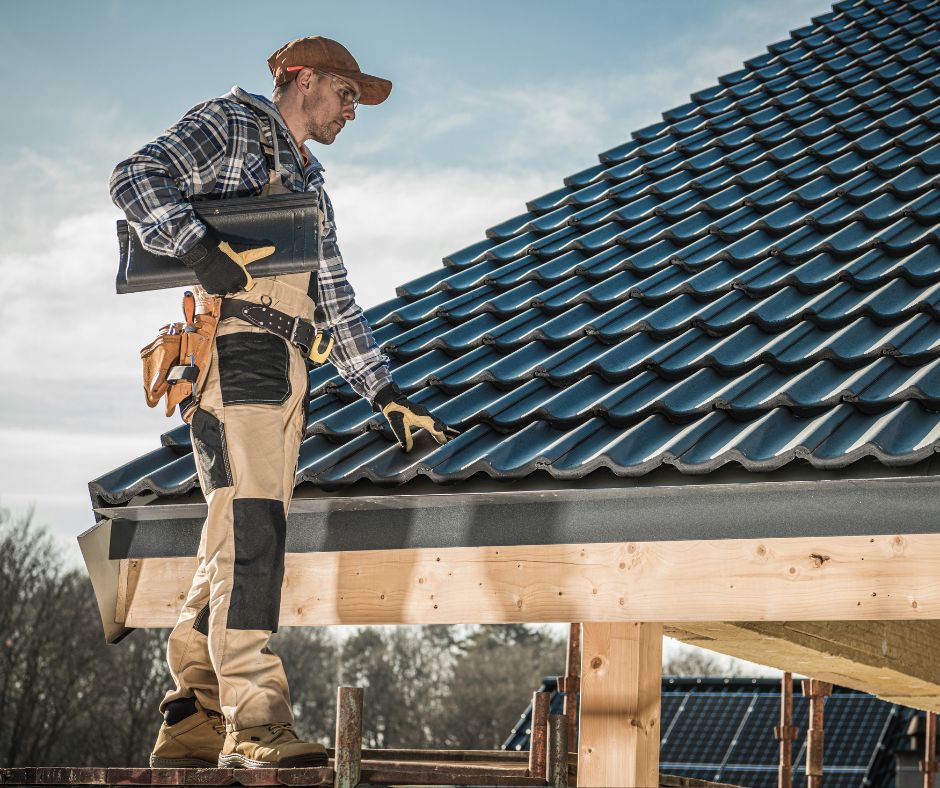Understanding the intricacies of a home roofing inspection is paramount in homeownership. This structured process involves meticulously examining various elements on the roof’s exterior and interior. From the initial preparation phase to the final recommendations for potential repairs, each step plays a crucial role in ensuring the longevity and safety of your property. As we delve into how a home roofing inspection unfolds, a deeper appreciation for the expertise required in this domain emerges. A professional roofer brings invaluable skills and knowledge to this process, navigating complexities with precision and offering insights that contribute to the overall integrity of the roof. Their expertise ensures that potential issues are identified accurately and addressed effectively, safeguarding the investment you’ve made in your home.
Roofing Inspection Preparation
Thorough preparation is essential before conducting a roofing inspection to ensure a systematic and comprehensive assessment of the roof’s condition. Start by creating a pre-inspection checklist that includes checking for any previous maintenance records, ensuring all necessary tools are available, and scheduling the inspection on a clear day for optimal visibility. Prioritize safety by wearing appropriate gear and securing ladders properly.
Additionally, gather information about the roof’s age, material, and past issues. Familiarize yourself with common roofing problems to watch for during the inspection. Adequate preparation streamlines the inspection process and helps identify potential issues early, contributing to effective roof maintenance and prolonging the roof’s lifespan.
Exterior Roof Assessment
Conducting an exterior roof assessment involves meticulously inspecting the outer components of the roof structure to evaluate its overall condition and identify any potential issues. This assessment includes a detailed examination of the roof’s surface for weather damage, such as missing or broken shingles, curling, blistering, or algae growth.
Additionally, the inspector will look for signs of wear and tear caused by exposure to elements like sunlight, rain, snow, and wind. Common indicators of wear and tear may include cracked caulk, rust on metal components, or deteriorating flashing around chimneys and vents. Inspectors can carefully assess these exterior elements to pinpoint areas requiring repairs or maintenance to ensure the roof’s longevity and functionality.
Interior Roof Evaluation
Upon entering the interior space of a property, the roof evaluation process transitions to examining the internal components for any signs of damage or issues that may impact the structure’s integrity. The interior roof evaluation includes the following:
- Attic Space Inspection: The inspector will carefully assess the attic area for any signs of water leaks, mold growth, or structural damage that may indicate roof issues.
- Moisture Detection: The inspector will utilize tools like moisture meters to search for any indications of moisture infiltration within the attic space, which could signal a roof leak.
- Ventilation Examination: Proper ventilation is crucial for preventing moisture buildup and extending the roof’s lifespan so that the inspector will evaluate the ventilation system in the attic.
- Insulation Check: Adequate insulation helps with energy efficiency, prevents ice dams, and maintains a healthy roof environment, making it an essential aspect of the inspection.
Identification of Roofing Issues
Moving from the interior roof evaluation to identifying roofing issues involves a meticulous examination of the roof’s external components for any signs of damage or potential concerns affecting its structural integrity. During this phase, a trained inspector carefully inspects the roof for common leaks and shingle damage. Roof leaks can manifest as water stains on the ceiling or walls, indicating a potential breach in the roof’s waterproofing.
Shingle damage, including cracks, curling, or missing shingles, can expose the underlying roof structure to moisture and further deterioration. By systematically evaluating these key areas, inspectors can pinpoint specific problems that require attention to maintain the roof’s functionality and prolong its lifespan.
Recommendations and Repair Solutions
In assessing the identified roofing issues, the inspector will provide detailed recommendations and propose tailored repair solutions to address the concerns affecting the roof’s integrity. Various repair options are available to address roofing problems, including patching up leaks, replacing damaged shingles, reinforcing weak spots, or even recommending a full roof replacement if necessary.
To ensure the roof’s longevity, the inspector may also provide maintenance tips such as regular gutter cleaning, tree trimming to prevent debris accumulation, inspecting the roof after severe winter weather conditions, and scheduling annual professional inspections. Following these recommendations and repair solutions is crucial in maintaining a safe and durable roof for your home.
